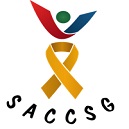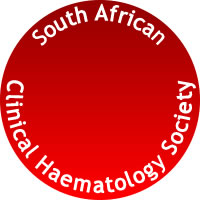Original Research
Chronic myeloid leukaemia in the South African public health setting: Are we reaching the European LeukemiaNet targets for frontline therapy?
Submitted: 08 October 2020 | Published: 09 December 2020
About the author(s)
Tshifhiwa B. Sikhipha, Department of Internal Medicine, Faculty of Health Sciences, University of the Free State, Bloemfontein, South AfricaGina Joubert, Department of Biostatistics, Faculty of Health Sciences, University of the Free State, Bloemfontein, South Africa
Claire L. Barrett, Department of Internal Medicine, Faculty of Health Sciences, University of the Free State, Bloemfontein, South Africa
Christopher D. Viljoen, Department of Haematology and Cell Biology, Faculty of Health Sciences, University of the Free State, Bloemfontein, South Africa
Shivani Dhar, Department of Internal Medicine, Faculty of Health Sciences, University of the Free State, Bloemfontein, South Africa
Jacques L.R. Malherbe, Department of Internal Medicine, Faculty of Health Sciences, University of the Free State, Bloemfontein, South Africa
Abstract
Background: Successful therapy of chronic myeloid leukaemia (CML) relies on close monitoring of patients’ response to therapy using the standardised real-time quantitative polymerase chain reaction (RQ-PCR) or fluorescent in situ hybridisation (FISH) at 3, 6 and 12 months. The European LeukemiaNet has published recommended therapeutic targets for frontline therapy at specific time points. Imatinib, a tyrosine kinase inhibitor, is used for the frontline treatment of chronic and accelerated phase CML in our setting.
Aim: The aim of this study was to evaluate treatment response of patients with CML in chronic or accelerated phase treated with imatinib during the first 2 years of therapy.
Setting: Universitas Academic Hospital, South Africa.
Methods: In this analytical cohort study, a retrospective file review of all chronic and accelerated phase CML diagnosed between 2009 and 2016, who were initiated on imatinib as front-line therapy, was performed. Clinical and laboratory data were collected for different time intervals as recommended by European LeukemiaNet guidelines.
Results: Thirty-seven patients met the inclusion criteria. An optimal response was obtained in 82.6%, 54.2%, 50.0% and 66.7% of patients at 3, 6, 12 and 18 months, respectively.
Conclusion: The patient outcomes were comparable with other published studies, with two-thirds of patients achieving an optimal response at 18 months. It is important, however, that factors contributing to suboptimal responses in the remaining third of patients should be explored.
Keywords
Metrics
Total abstract views: 3327Total article views: 4357



